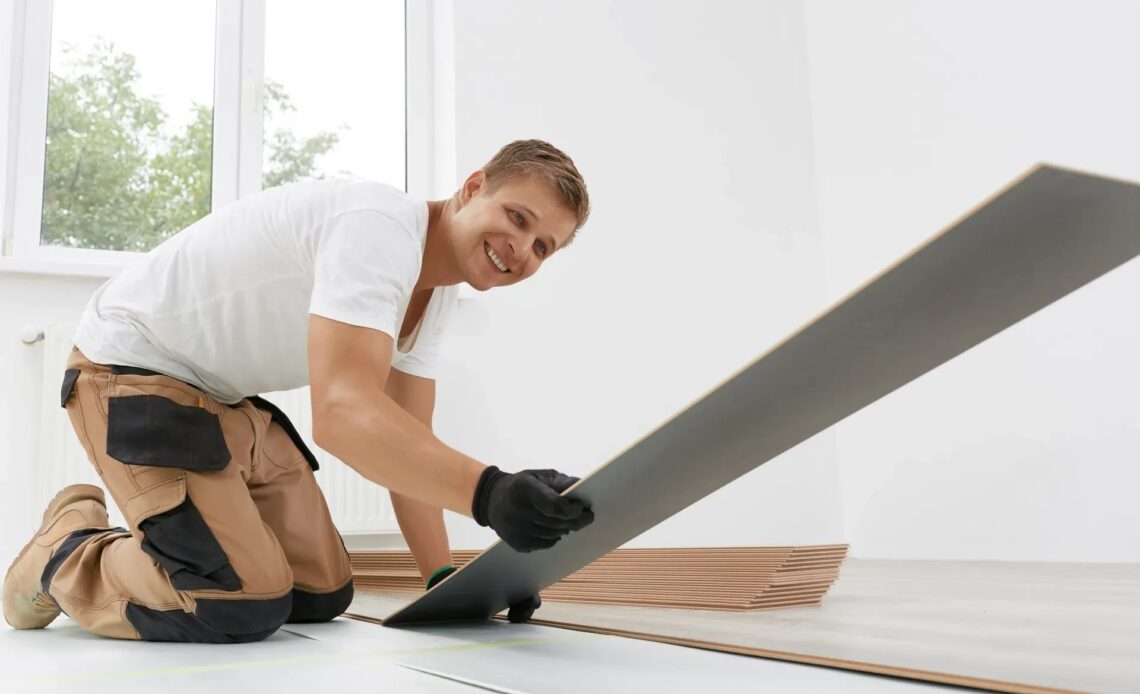Among the most important components of any interior design is flooring. It may make a big difference in your space and is more than simply a place to lay your feet. There are several options, ranging from contemporary laminate to vintage wood and numerous other materials. However, engineered timber flooring is the top type. What is engineered wood precisely, and how do you make it? You will learn about engineered wood flooring and how to maintain it from this post. We would also talk about another sort of wood flooring, parquet flooring.
Understanding Engineered Timber Flooring
Engineered timber flooring integrates natural wood with innovation to produce an appealing floor that displays the natural feel of hardwood and more robust and stable properties. It is distinct from solid hardwood flooring, as the latter fundamentally consists of a single wood layer. In contrast, engineered timber flooring is built upon multiple interconnected layers in a cross-grain arrangement.
These include a hardwood top wear layer such as oak, walnut, or maple, which displays the natural pattern of wood; a core layer constructed using plywood, HDF, or another composite for strength and moisture resistance; and a backing layer for support and stability.
Advantages of Engineered Timber Flooring
There are many benefits of engineered timber flooring, such as:
- Durable. Engineered timber flooring is intended for daily life. Its layered nature makes it less prone to warping, cupping, or twisting, which are evident in solid hard timber flooring.
- Versatile: Plank widths, wood species, and finishes vary greatly, and engineered wooden flooring provides unmatched adaptability. Whether you prefer oak’s rough charm or the sleek elegance of maple, there is a design to suit every decor and taste.
- Easy installation: Many engineered timber floors come in planks or panels that click into place. There is no need to glue engineered boards, so the floors do not need time to set as with solid timber floors. This makes them perfect for a DIY project, or floor layers will often charge you less for installation.
- Environmentally Friendly: While solid timber flooring involves cutting down mature trees, engineered timber boards rely on fast-growing species for their core boards. It makes a significant environmental difference, and the manufacturing process produces less waste, making it the best choice.
- Affordable: While solid timber flooring can be expensive, the economics of production mean that engineered boards are frequently less costly. Your floor’s improved durability will also last longer, driving down long-term expenses.
Parquet Flooring: A Timeless Classic
Among the types of timber flooring, parquet flooring is notable for its spectacular geometric patterns and classic look. Parquetry is usually constructed of small hardwood pieces that can be assembled into simulations of geometric designs like herringbone or chevron. Engineered timber construction is now commonly used for its improved durability and stability. Because of its extraordinary and sophisticated pattern, this material is frequently employed for high-end residential living, historical structures, and extravagant hotels.
Characteristics of Parquet Flooring
The following are some essential features of parquet flooring:
Elegant Aesthetic: One of the unique patterns of parquet flooring is its high-level aesthetic. Parquet floors are sober elements that communicate an aesthetic of sophistication, ranging from classical beauty to contemporary. Though many design options are available, the consumer can make his own selection. Parquet flooring can effortlessly fit any interior style, from form to modern expression.
Durability and Reliability: Parquet flooring, like other engineered timber flooring, enjoys a higher durability rate, bringing excellent environmental stability into play. These are relatively easy to do and require essential maintenance throughout their whole lifespan.
Ease of Maintenance: Parquet flooring is a relatively easy-to-maintain type of floor. It merely needs regular sweeping or vacuuming, with occasional mopping, to remove dirt from its charming wood-look surface. The floor’s surface protects against spills and dirt, making it an excellent choice in high-traffic areas.
Timeless charm: Parquetry flooring is in the public, continuing to be used hundreds of years after it was first popular in 2007. This enduring appeal promises a beautiful design for generations.
Installation and Maintenance
Installing engineered timber flooring is relatively easy. The planks or panels are often glued, nailed, or clicked together; they must be adequately acclimatised and their subfloor prepared well. Follow the manufacturer’s instructions and use the proper instruments and materials to guarantee a good outcome.
Once the engineered timber flooring is laid down, minimal maintenance must be done to keep your floor looking its best. Regular sweeping and vacuuming will remove grime and dust. A damp cloth or a wood patina cleaner can restore its shine when required. Any moisture and abrasive cleaning materials should be avoided since they can cause damage to the wood. Moreover, to keep scuff marks off your hardwood floors, always use felt pads under the legs of furniture and area floor coverings in high-traffic zones.
Conclusion
Engineered timber flooring is attractive, strong, and ecologically friendly, which is excellent for discerning homeowners and designers. Thus, due to its diverse and simple installation and almost maintenance-free nature, engineered timber is a prevalent choice in homes and businesses worldwide. With many types, including classic parquet and sleek wide-plank oak, there is a perfect option to complement every style and price range.

